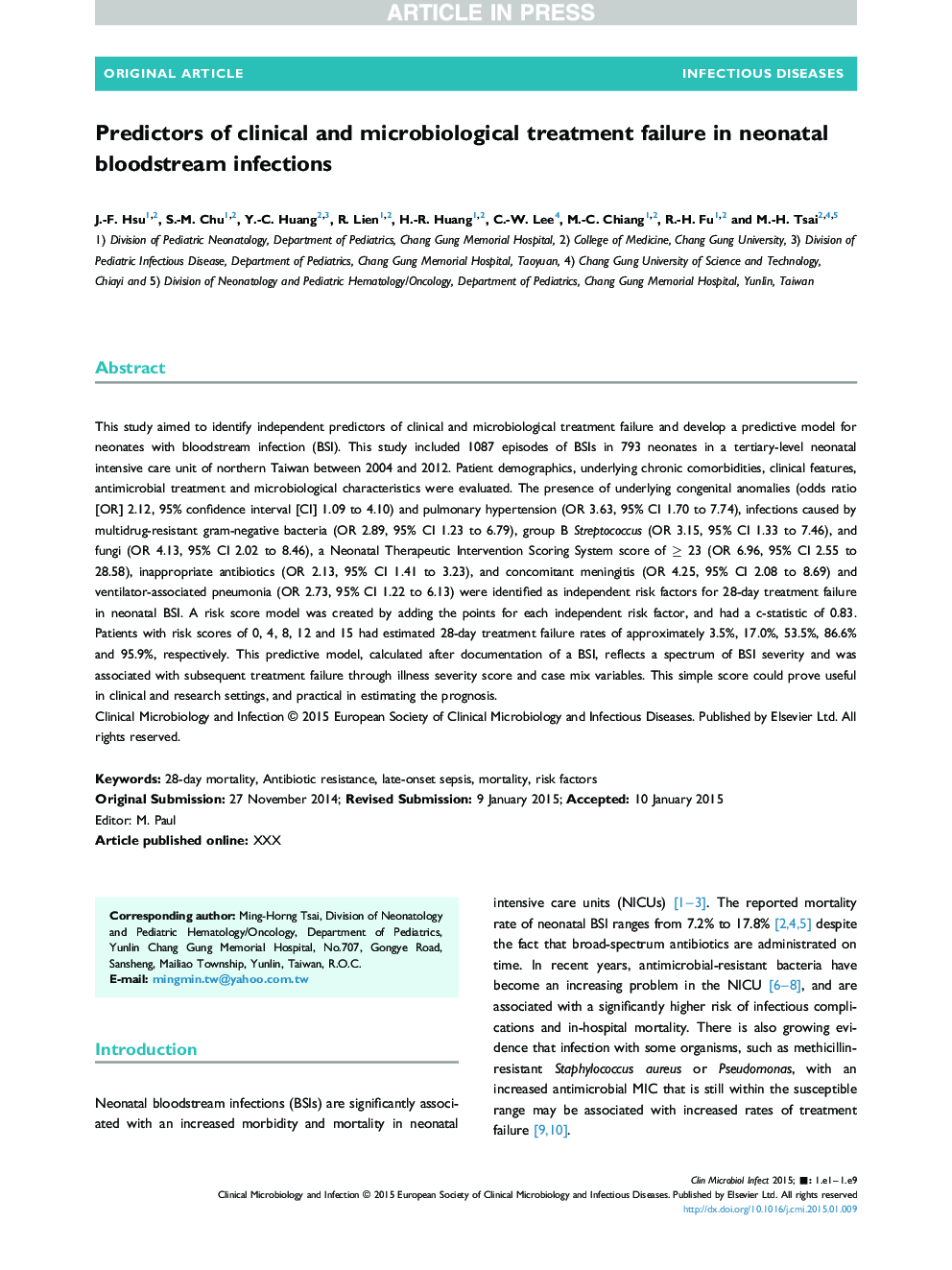| Article ID | Journal | Published Year | Pages | File Type |
|---|---|---|---|---|
| 6129663 | Clinical Microbiology and Infection | 2015 | 9 Pages |
Abstract
This study aimed to identify independent predictors of clinical and microbiological treatment failure and develop a predictive model for neonates with bloodstream infection (BSI). This study included 1087 episodes of BSIs in 793 neonates in a tertiary-level neonatal intensive care unit of northern Taiwan between 2004 and 2012. Patient demographics, underlying chronic comorbidities, clinical features, antimicrobial treatment and microbiological characteristics were evaluated. The presence of underlying congenital anomalies (odds ratio [OR] 2.12, 95% confidence interval [CI] 1.09 to 4.10) and pulmonary hypertension (OR 3.63, 95% CI 1.70 to 7.74), infections caused by multidrug-resistant gram-negative bacteria (OR 2.89, 95% CI 1.23 to 6.79), group B Streptococcus (OR 3.15, 95% CI 1.33 to 7.46), and fungi (OR 4.13, 95% CI 2.02 to 8.46), a Neonatal Therapeutic Intervention Scoring System score of ⥠23 (OR 6.96, 95% CI 2.55 to 28.58), inappropriate antibiotics (OR 2.13, 95% CI 1.41 to 3.23), and concomitant meningitis (OR 4.25, 95% CI 2.08 to 8.69) and ventilator-associated pneumonia (OR 2.73, 95% CI 1.22 to 6.13) were identified as independent risk factors for 28-day treatment failure in neonatal BSI. A risk score model was created by adding the points for each independent risk factor, and had a c-statistic of 0.83. Patients with risk scores of 0, 4, 8, 12 and 15 had estimated 28-day treatment failure rates of approximately 3.5%, 17.0%, 53.5%, 86.6% and 95.9%, respectively. This predictive model, calculated after documentation of a BSI, reflects a spectrum of BSI severity and was associated with subsequent treatment failure through illness severity score and case mix variables. This simple score could prove useful in clinical and research settings, and practical in estimating the prognosis.
Related Topics
Life Sciences
Immunology and Microbiology
Microbiology
Authors
J.-F. Hsu, S.-M. Chu, Y.-C. Huang, R. Lien, H.-R. Huang, C.-W. Lee, M.-C. Chiang, R.-H. Fu, M.-H. Tsai,
